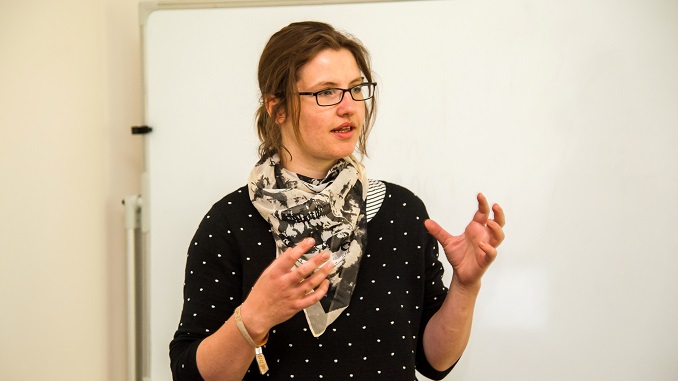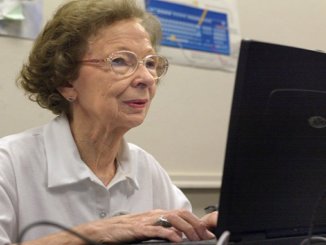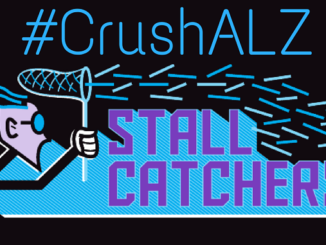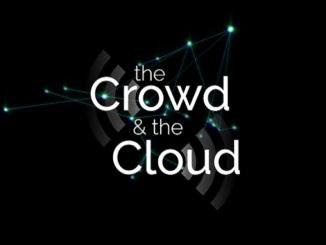
Finally, we’re bringing this awesome research to the public.
A citizen science expert, science writer, and educator, Egle Marija is currently the citizen science coordinator for the Human Computation Institute, where she focuses on on crowdsourcing Alzheimer’s research. She’s also the Co-Founder, along with Janet Chapman, of Crowd2Map Tanzania — a crowdsourcing initiative aimed at creating a comprehensive map of villages, roads, and public resources rural Tanzania. Crowd2Map emerged from MozFest 2015, when Janet and Egle started exploring options to involve Tanzanian schools into Citizen Science.
Evidence
EyesOnALZ website
Creativity and Learning in Citizen Cyberscience – Lessons from the Citizen Cyberlab Summit, Journal of Human Computation (and, while you’re at it, check out their entire issue on citizen science)
Online game invites public to fight Alzheimer’s, Cornell Chronicle
Egle Marija’s LinkedIn page
@seplute on Twitter
Check out Egle Marija on Tumblr
Download Egle Marija’s photo
Egle’s story
Could you start by telling me a bit about your work?
I’m Egle Marija. In general, I work in citizen science and crowdsourcing. I work on many different things, but the one I’m focusing on now is Alzheimer’s citizen science. I am the citizen science coordinator for EyesOnALZ. It is run by the Human Computation Institute, which I am part of. The project kicked off just this year, in January 2016, and it aims to crowdsource Alzheimer’s research.
The research is being done at the Schaffer-Nishimura Lab at Cornell University. They have advanced the understanding of how Alzheimer’s is linked to reduced blood flow in the brain, which was known, but nobody knew why. They discovered promising leads in improving the blood flow, which also reduces Alzheimer’s symptoms.
The only problem is that they’ve been stuck with this discovery for a long time. They couldn’t do anything with it because the analytic bottleneck is severe. The data analysis takes so long that it would take decades to get any closer to the treatment, and so they were just stuck.
Almost by accident, the Director of the Human Computation Institute discovered this Alzheimer research project, and realized that the data is very well suited for citizen science. We could put it on an online platform where everybody can look at it and help us analyze it.
Thinking about this work, can you hone in on one specific time where you’ve really felt a sense of success?
The project is really new, but I think the biggest sense of success that we are still riding on is just the fact that we accidentally discovered this and we were able to put it out there. We are still on the high from the fact that finally we’re bringing this awesome research to the public.
On a lower scale, the more specific one would be that we are trying to engage everyone, all kinds of communities, kids, everyone. We have an extreme amount of interest from retirement communities and now, we are starting to bring these offline sessions into retirement communities and engaging them. That was a recent big win.
Just last week we had a session in a Florida retirement community and one of the members ran it. I wasn’t there, but people brought spouses with Alzheimer’s and they all engaged in that.
The big picture is that we don’t just want to analyze all the data, but we want to empower everyone to help, to have an impact on a disease that affects everyone. This was a real example of that working.
How about an example of a challenge?
I work in citizen science and I know a lot of citizen science projects, but as far as I know, this is the first one that is actively trying to engage such a wide community.
To give a bit of background, we are building this project using the Stardust@home platform, which was looking for traces of stardust in images of aerogel. It had a really narrow community, just a couple of hundred active people, who had a specific interest in looking at those images. They never tried to expand it.
Now we’re working on the same platform but we need to make the interface — everything — to meet the needs of everyone, especially the senior population and people with various disabilities. The user experience needs to reflect that. That is a constant challenge. We run sessions and conferences to help the community, to get the community to help us, give us tips, what to do, how to make it accessible for everyone. We have quite a small budget and just a few people on the team. I have no design experience but I’m making most of the design decisions on the project, which is challenging. The community helps.
We have a growing online community and we, of course, get feedback in all offline events and that has been a great help. We are also reaching out to volunteers, but when people are volunteering, they might not always be available and it takes a lot of work to coordinate.
Are there any other things you’ve tried to approach solving how best to scale this platform and engage a broader audience?
We’ve done a lot of work to rebuild the platform to make it more scalable so it can grow quickly and expand its user base in the future. Alzheimer’s affects millions of people, and we expect many people to join.
Shifting now to the broadest issue in the Mozilla universe — keeping the internet open and free. For you, what is the open internet?
That’s a very difficult question. Since I come from the science perspective, the open internet for me means, first of all, a tool to democratize science, science mostly, data. It’s making things that have been restricted to certain communities and certain spaces open for everybody.
That’s keeping it always free, always accessible, it happens in the community. A tool to foster the communities that keep open science projects alive. I’m a believer in the community.
In citizen science, it’s the community that brings a project to life, as opposed to individual research scientists who set up a project. It’s a really big mistake when people want to crowdsource the data, they just put it out there and leave it. Data, alone, is not a project.
A project is the data, plus the scientist, plus the people, plus all of the interactions. Only with the engagement of the community can these things survive. I am also interested in learning and creativity in citizen science — and that also cannot happen without a community.
Can you tell me about a time where this accessibility or openness has been important to you, personally?
The thing I just described has been a big changer in my whole life, actually. I come from an academic background and I was very fed up with the academic life that I was experiencing, just doing science in a really strict space with strict rules.
I discovered citizen science by accident, and I realized how much is out there, what tools are out there, how science has become open with virtual citizen science. It changed my career completely. It literally changed my career path. I grabbed the opportunity and I left academia to do open science.
What frustrated you when you were in academia? What wasn’t working?
The main thing was people were losing track of why they’re doing science. For me, science is gaining knowledge, it’s improving the world with knowledge. I come from bio-sciences. Bio-sciences has gotten really competitive.
Many research labs, instead of collaborating, they compete. They pretty much waste resources and sometimes waste their careers on competition instead of doing things together and making them open. The main thing is to publish as many papers as they can, and in “good” journals, not open-access journals, where everybody could access their work. That was really frustrating.
I studied for my PhD in a lab that was a typical example of this. I had no room for creativity. I had to do exactly what the Principal Investigator PI told me so she could publish in a better journal. Finally, I was like “No. This is not science.” So I quickly ran from there and then I discovered citizen science, which is exactly what science is. Science is everyone’s and everyone can create that knowledge, amongst other things.
Getting more specific about Mozilla. How did you get involved and what has that been like?
I came to the last MozFest by accident. I was doing an internship, a citizen science internship in Geneva. They were running an open data workshop and they grabbed me at the last minute and that’s what got me to Mozfest. This was my first involvement.
While at Mozfest, I met a lot of other people in citizen science and other things. That, again, has shaped the next steps for me. I also met Janet Chapman. She approached us to see how she could bring citizen science to schools in Tanzania.
Then I started directly working with her. We wanted to set up a simple citizen science project, so we used this generic data collection platform and we realized that we could use this generic data collection platform to make a map of the country. The map was then almost blank, but I realized that we could use really simple crowdsourcing tools to make a difference.
The Crowd2Map project was born. That has been a big part of my life over the last year. That’s been really exciting.
That is a good example.
I understand you’ve been involved with Mozilla for a year now. Do you have any feedback? Have there been any things that didn’t work out well or things that could be improved?
My feedback is mostly around planning for MozFest, because my session is really specific. My session kept disappearing from the schedule and things like that. I didn’t get my ticket until the last minute, little organizational things that can happen to everyone.
But I actually really like the chaos. I’m a chaotic person and this is a chaotic event and chaotic things are happening. It works for me. I’m at home, running around, and with many things going on. It’s really great.
I really like that even though it’s a web conference, we are being encouraged to talk to people and not with devices. That doesn’t happen in many other events to this level. You come, grab a random person, and just start talking to them like you’ve been friends forever. It’s this atmosphere that is really awesome.
How might the stories that we’re collecting be useful to you, if at all?
As I said, I’m a really big believer in community and I think innovation, any kind of creativity, can only be born out of being in a community, talking to each other, and so on. And stories help to build that, instead of just facts, like “this is this project, this is that project.” We don’t tell stories enough. That’s why I’ve really wanted to come here and see what this [StoryEngine] is. I guess it’s the community link.
The interview was originally published on storyengine.io
https://storyengine.io/stories/open-innovation/egle-marija-ramanauskaite/


